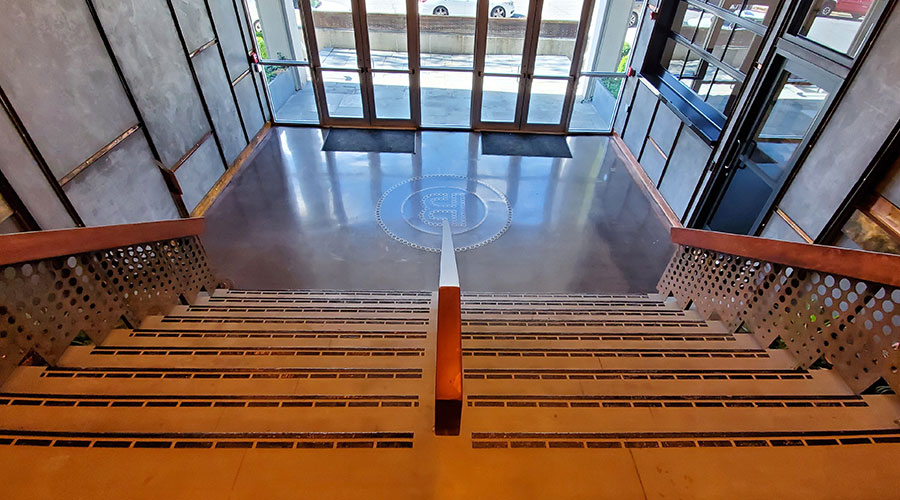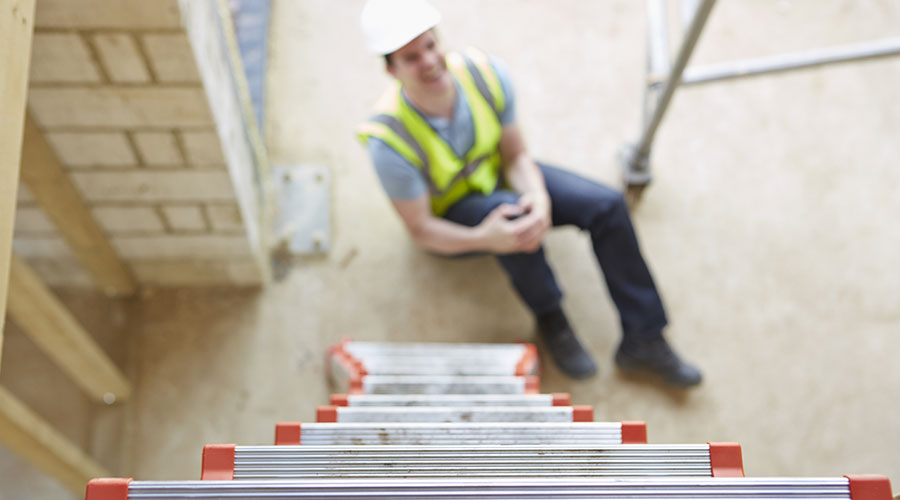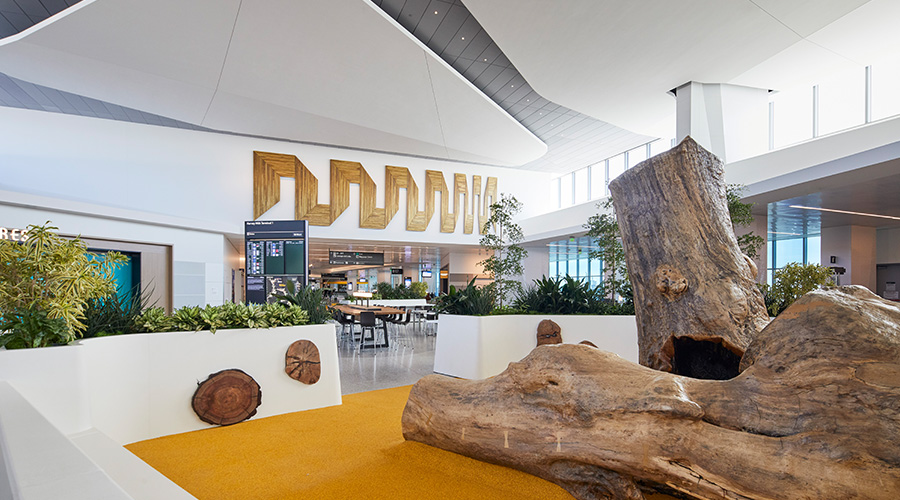
Case Study: True Cost Analysis of Safety Stair Treads
Property manager uses product to improve safety of wet stairs March 1, 2024
For commercial property owners and managers, evaluating the Total Cost of Ownership (TCO) for purchases is critical to acquiring items at the lowest long-term cost. Assessing TCO requires not only understanding the initial purchase cost but also consideration of the operating costs, longevity, and remaining value beyond its expected life.
When managing properties, using the industry’s best practices and products with an eye on TCO can be a cost-effective way to increase safety as well as reduce maintenance, potential liability and even commercial insurance rates.
TCO is an even more critical analysis when new products enter the market that disrupt the status quo. After all, it is difficult to evaluate the value of an innovative product that promises to be a much more effective, long-term solution but initially costs more, uses different materials or is applied differently. For property owners and managers, this is the case when analyzing the TCO of non-skid stair tread striping applied to interior and exterior stairs to prevent slip and fall accidents.
Although simple in concept, the application and maintenance of safety stair tread striping is particularly challenging in outdoor or high-use settings. The traditional choice – non-skid adhesive tape – can peel or wear away in a short time so must be replaced frequently. However, new innovative 100 percent epoxy-based material containing embedded nonskid aggregate are now available that promise to last much longer, requiring minimal reapplication.
To evaluate the TCO of both options, building owners and managers can apply a specific formula used for capital equipment, with slight variations for stair treads: TCO = initial cost (I) + maintenance costs over 5 years (M) + estimated downtime (D) – remaining value after 5 years of depreciation (R).
Initial cost (I)
When choosing among alternatives in a purchasing decision, property owners often look at the initial purchase price. However, they should also consider the long-term cost of ownership.
In the case of non-skid adhesive tapes, the initial cost is approximately $1.50 per linear foot. In typical indoor conditions, non-skid tape generally lasts only about six months before requiring removal and reapplication. At this rate, using the tape costs about $3 per linear foot per year or $15 per linear foot over five years.
On exterior stairs or ramps, the expected life of traction tape is only three months but can be considerably shorter particularly in areas exposed to chemicals, moisture, high-temperatures, or high traffic. With a three-month lifespan, tape costs approximately $6 per linear foot per year or $30 per linear foot over five years.
Compare tape to a more durable option: a 10 percent epoxy-based material that creates a superior tread with an initial cost of $4.50 a linear foot. Designers created the material to last at least five years in most outdoor applications and many more years in indoor applications. The product from Form-A-Tread Company achieves a strong bond to a wide range of stair tread surfaces and contains embedded nonskid aggregate to increase traction.
While the durable tread initially costs more than non-skid tape, it takes just 18 months to reach the breakeven point for indoor use. After 18 months, the Form-A-Tread stair tread saves the facility the cost of reapplying new non-skid tape every six months. For outdoor applications, the material savings are $25.50 over the same period of time.
Maintenance (M)
Non-skid tape is difficult to maintain, can become unsightly and must be frequently inspected and replaced. Since tape cannot be repaired, it must be replaced if damaged. The remaining tape and residual adhesive must be thoroughly removed from the surface before the new tape is applied.
Peeling tape can also pose a trip hazard. Tape often peels off in a short time because it does not bond well, especially to common surfaces like concrete, stone and masonry. The surface non-skid grit layer can also become ineffective and quickly compromised, especially in hi traffic locations.
Because non-skid tape is not very durable it is primarily used on interior stairs. In outdoor applications, it may only last for as little as a week or less in harsh conditions or consistent exposure to sun, rain, snow, ice melt chemicals, power washing and other cleaning methods.
“In my experience, non-skid tape comes off repeatedly. It is a temporary solution, so you are wasting your time, energy, and effort every time you reapply it,” says Gani Bajraktari, senior property manager at New York-based Bajraktari Realty Management Corp.
Maintenance cost should also include the manager’s time and the labor required for frequent inspection and reapplication of the traction tape. In addition, purchasing and inventory costs accrue when the tape must be continually replaced and kept available for use.
Today, a 100 percent solids epoxy paste that contains embedded slip resistant aggregate is a more cost effective and long-term stair safety tread solution. These materials create a tread with consistent, superior traction and safety for at least five years, even outdoors, with essentially no maintenance. They also resist UV, moisture, chemicals, ice melt, temperature extremes, aggressive cleaning and pedestrian and vehicle traffic.
Because the nonskid aggregate is held in suspension within the formula and is not just adhered to the surface, as with traction tape, it does not wear away. The hardness of the formula (75 Shore D) enhances the abrasion-resistant, so the overall tread is much less susceptible to damage compared to traction tape. Unlike tape, if the epoxy material were to be damaged, by an ice chopper for example, it is easily reparable. If damaged, just clean the surface, and reapply. The formula adheres to itself, which is a nice added feature. Overall, this innovative formula removes the cost associated with frequent inspection and replacement and significantly lowers the total cost of ownership.
According to Bajraktari, he first used the Form-A-Tread to improve the safety and footing of outdoor stairs in residential projects that could become slippery when wet.
“It held up amazingly well to the sun’s UV and outdoor weather,” says Bajraktari. “Seven years later it still looks as good as the day we applied it.”
Downtime (D)
The evaluation of TCO includes consideration of any downtime due to equipment failure.
In the case of stair treads, the equivalent of “downtime” is when the safety tread loses adhesion, starts to peel off, is damaged, or the surface traction is worn away.
The reality is that in many cases stair tread replacement does not occur immediately, or even for some time if not discovered or facility personnel are busy elsewhere. This can effectively mean the facility is not following its own safety protocols.
Stair tread “downtime” can have serious financial consequences if a slip and fall accident occurs, leading to litigation, liability, workers’ compensation claims and rising insurance rates. A long-term solution that does not require constant replacement minimizes any potential downtime, provides a consistent and predictable level of safety and can reduce the potential for such claims.
According to Bajraktari, the epoxy product improved safety and eliminated the need for frequent re-application and had a more aesthetic look over time due to the lack of visible wear. He has found the approach surprisingly cost-effective in reducing maintenance, potential liability and commercial insurance rates. In his experience, the cost to apply the product proved more cost-effective than dealing with additional claims and insurance costs.
Remaining value after 5 years (R)
Even with depreciation, capital equipment often retains some value after five years. In a similar way, more durable solutions like 100 percent solids epoxy pastes with embedded aggregate often still have value far beyond five years.
These epoxy pastes are formulated to create a permanent mechanical bond. Not only does an epoxy paste adhere to the stair tread surface, but it also flows into the microscopic cracks and crevices of concrete or other porous substrates and mechanical bonds. The formula has also been shown to have excellent adhesion to smooth surfaces like tile, and steel or aluminum diamond plate.
The bond is so strong that a chisel or angle grinder is required to remove the stair tread line, an advantage in high-traffic areas. Since the aggregate is embedded throughout the entire epoxy paste and not just on the surface, as the epoxy paste wears over time new aggregate is continually exposed to provide renewed traction.
“Instead of temporary applications, it is much more effective to solve the problem the first time with a product like Form-A-Tread and be done with it,” says Bajraktari. “The footing is amazing, and you feel more secure going up and down the stairs. As far as durability, I expect the stair treads to last for at least ten years or more in indoor applications.”
Although it is natural for commercial property owners and managers to seek solutions with the lowest initial cost, considering the TCO is a much more cost-effective alternative. Given this, the properties can achieve significant long-term savings and increased safety by looking beyond short-term choices like non-skid tape in favor of much more durable options like epoxy paste stair tread that does not require continual replacement.
Next
Read next on FacilitiesNet












